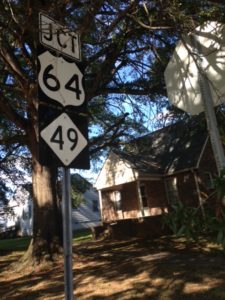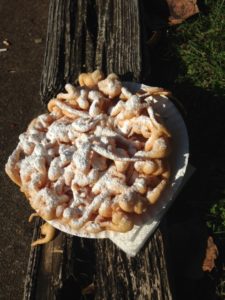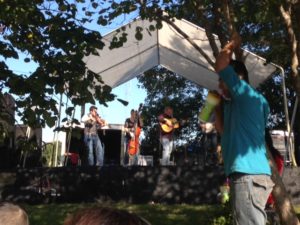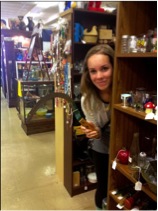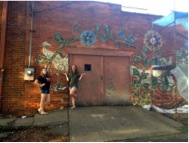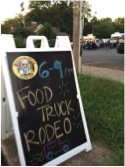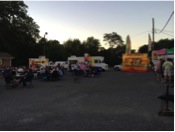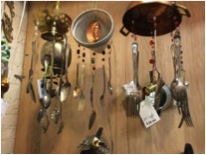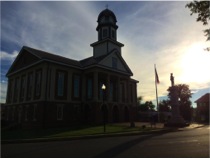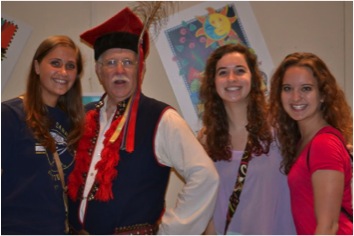By Jenna Hokanson -2014
The phrase “the grass is always greener” has never failed to boggle my mind. As humans tend to always want the things that are out of grasp to us, the things that we aren’t used to seeing every day. For instance, I cannot count on one hand how many times my friends and I have agreed to switch hair for the day. I can’t tell you how many times I’ve grumbled to myself about eating the same granola bar every day for a week, or how many times I’ve stared at my closet with “nothing at all to wear.” Yet all of these thoughts when looked at deeper remind me that while I may want what others have, others also want what I have. The Highway 64 project has reminded me of how important it is to notice how green your grass really is.
I’ve never been one to hate the place that I come from. At the same time I would say, I’ve never been one to love where I’ve come from either. This is likely due to the fact that I get bored far too easily and that I am often so busy dreaming about the places far beyond that I miss the gifts right under my nose. To be honest, the Piedmont has it’s qualities I could do without. I often disagree with some closed mind sets, and sitting around catching’ catfish is not my idealistic way of spending my morning. However, as we visited several towns along the way through the Piedmont of North Carolina, I found where my love does lie.
My love lies in the cities. I spent a summer working in Raleigh, NC during my college career, but who knew until this trip what I was missing in terms of cultural experiences. Not only did I have some of the best “upscale” home cooked food I have ever had, but the city offered a Multicultural Festival in which I sunk my teeth into the world that I have constantly thrived to know. I never knew that such a world could be so close. Not to mention the architecture of downtown, the tall buildings, and busy streets remind me of my own very mini New York City- which I love so much.
My love lies in the art. Because I feel I became bitter with the lack of everyone’s appreciation for art in my town, I forgot to realize that it is a staple in many people’s lives even if it’s not in everyone’s. Pittsboro, NC was the town I fell in love with at first sight. The mural on the wall outside of our parking spot- glass pieces,colored and mixed in with shards of mirrors, I saw myself in this mural and I saw myself in this town. After speaking with the owner of a local art shop, I found that art was indeed alive in this area and it was protected by those who desired to preserve it.
My love lies in the culture. Upon entering college, I never realized how unique the south truly was. I don’t mean to say I didn’t notice the thick drawl in the accents of my neighbors, or the fact that rebel flags are stilled deemed “appropriate” in some areas of my town. I mean to say that I never thought of how specific the south is in food, in manner, in religion, in relationships, and in the view of the world. While the south often is associated with being less progressive than other areas, I can appreciate the part of the south that is slow for the reason of letting themselves simply live. I don’t do that enough. I don’t just breathe in the crisp air and “shoot the breeze” on the porch. I admire that culture.
My love lies in the beauty. Driving along Highway 64 with a guest artist from London, he watched the streets and the trees with such delight. Saying how much he loved the little picket fences and how gorgeous the sky was on what seemed to me an ordinary road. It was in this moment that I realized I was not seeing something. My eyes had been fogged by being spoiled with beautiful towns my whole life. I was not seeing the gorgeous canvas that I was blessed to belong to. The oranges, reds, cobblestones, old bricks, trees and birds upon birds singing… the weather changing the feeling of each town on a daily basis-never expected and certainly never boring.
My love lies in the people. There is such a thing as “southern charm.” There is such a thing as going out of your way to look out for someone, to talk to someone, and to joke with them as they check out at your grocery line. In this area, humans interact, which sounds like what all people across the world should be doing, isn’t that what we’re made for? To grow not around but with one another? I appreciate talking to people I don’t know and learning about their lives. I appreciate that a lot people in the south take the finer things in life as the best things in life. I admire it because my materialism often shadows those thoughts. I often get frustrated that someone is walking too slow on the sidewalk of my small town, but I must keep in mind that they are living instead of rushing through life.
And lastly…My love lies in Home. There was a feeling I noticed as I approached the end of my trip, our last stop was my home: Lexington. It’s a lot like falling in love. Often the person who we should love the most and need to love the most is right in front of us. We tend to take them for granted until it’s too late. We tend to expect them to always be there, that we don’t realize the gifts they have provided us every day. As a senior, leaning toward my last journey before adulthood, I see home differently. I’ve always believed that home is mostly in the people around me, but living in the same house my whole life, it’s hard to not look around Lexington and feel guilty for the time loving it that I missed out on. However, one must realize that each place that touches us, touches us in a way that sticks.
I am thankful I made this trip, I am thankful that I made this trip now. Because now, before I head out I can take another look at the grass and be thankful that it is so very iridescently green. Every part of my 21 years in North Carolina has molded me into the person I have become and has changed the way I view those around me and the unique qualities that make our culture, our culture. Every time I come back I can take in that Carolina skyline, the rolling hills, the scent of the burning leaves, the vinegar in the BBQ sauce, the “how many times can this person call me sweetie?”, the door holding, the y’all speaking, and the love. All the love in one place.
And I can know that home will always be there.
No matter where I am, I’ll be “gone to Carolina in my mind”.





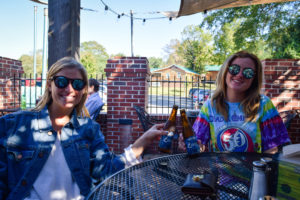 al oasis that is Saxapahaw, North Carolina. For tow n locals, as well as residents of Chapel Hill and Burlington in search of a liberal community, Saxapahaw provides a transport away from daily life. For Amidst a historical brick complex consisting of a local brewery, butchery, The Eddy Restaurant and Pub, and the Haw River Ballroom, there lies today’s destination: a yellow and red gas station and one-room general store.
al oasis that is Saxapahaw, North Carolina. For tow n locals, as well as residents of Chapel Hill and Burlington in search of a liberal community, Saxapahaw provides a transport away from daily life. For Amidst a historical brick complex consisting of a local brewery, butchery, The Eddy Restaurant and Pub, and the Haw River Ballroom, there lies today’s destination: a yellow and red gas station and one-room general store. lectic expanse of merchandise. The three aisles in the store include a nice selection of local and nonlocal wines, beers, and kombucha; select grocery items such as pet food; and a plethora of artisan goods–ranging from organic name-brand snacks, to homemade chocolates, to all-natural soy candles and homeopathic lotions, oils, and hair products. The display of local products is frequently rotated, featuring different self-made t-shirts, hand-knit mittens, or personalized keychains. Despite artisan prices, it is easy to find small treasures that are special and worth the purchase.
lectic expanse of merchandise. The three aisles in the store include a nice selection of local and nonlocal wines, beers, and kombucha; select grocery items such as pet food; and a plethora of artisan goods–ranging from organic name-brand snacks, to homemade chocolates, to all-natural soy candles and homeopathic lotions, oils, and hair products. The display of local products is frequently rotated, featuring different self-made t-shirts, hand-knit mittens, or personalized keychains. Despite artisan prices, it is easy to find small treasures that are special and worth the purchase. ers place their orders, built into view as part of the minimalist and transparent cuisine mission. If eaters come to dine on a sunny North Carolina day, they may eat outside on the terrace beneath vine-covered pergolas, sharing a bottle of wine or old-fashioned sodas while they wait for their server to bring out their meals.
ers place their orders, built into view as part of the minimalist and transparent cuisine mission. If eaters come to dine on a sunny North Carolina day, they may eat outside on the terrace beneath vine-covered pergolas, sharing a bottle of wine or old-fashioned sodas while they wait for their server to bring out their meals.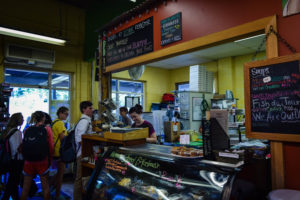 phere–from the people, to the artisan goods–allows customers to feel like they are on a quick vacation from the typical Piedmont North Carolina lifestyle. The General Store warrants a strong recommendation to visit for those who want to diversify their impression of North Carolina culture and who wouldn’t mind a short, worthwhile detour off Highway 64.
phere–from the people, to the artisan goods–allows customers to feel like they are on a quick vacation from the typical Piedmont North Carolina lifestyle. The General Store warrants a strong recommendation to visit for those who want to diversify their impression of North Carolina culture and who wouldn’t mind a short, worthwhile detour off Highway 64.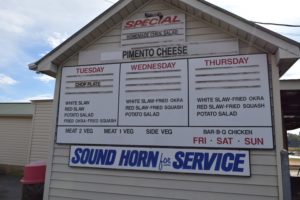 there be so much argument about barbeque?
there be so much argument about barbeque? 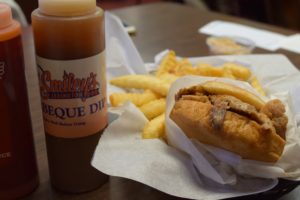 all of Lexington, North Carolina.
all of Lexington, North Carolina. 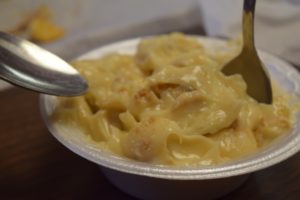 capital of the world,” said James Romoser, a reporter for the paper. “And for the people who prepare the meat, it means that the days before Christmas are a sleepless marathon of cooking over a smoky barbecue pit.”
capital of the world,” said James Romoser, a reporter for the paper. “And for the people who prepare the meat, it means that the days before Christmas are a sleepless marathon of cooking over a smoky barbecue pit.”

